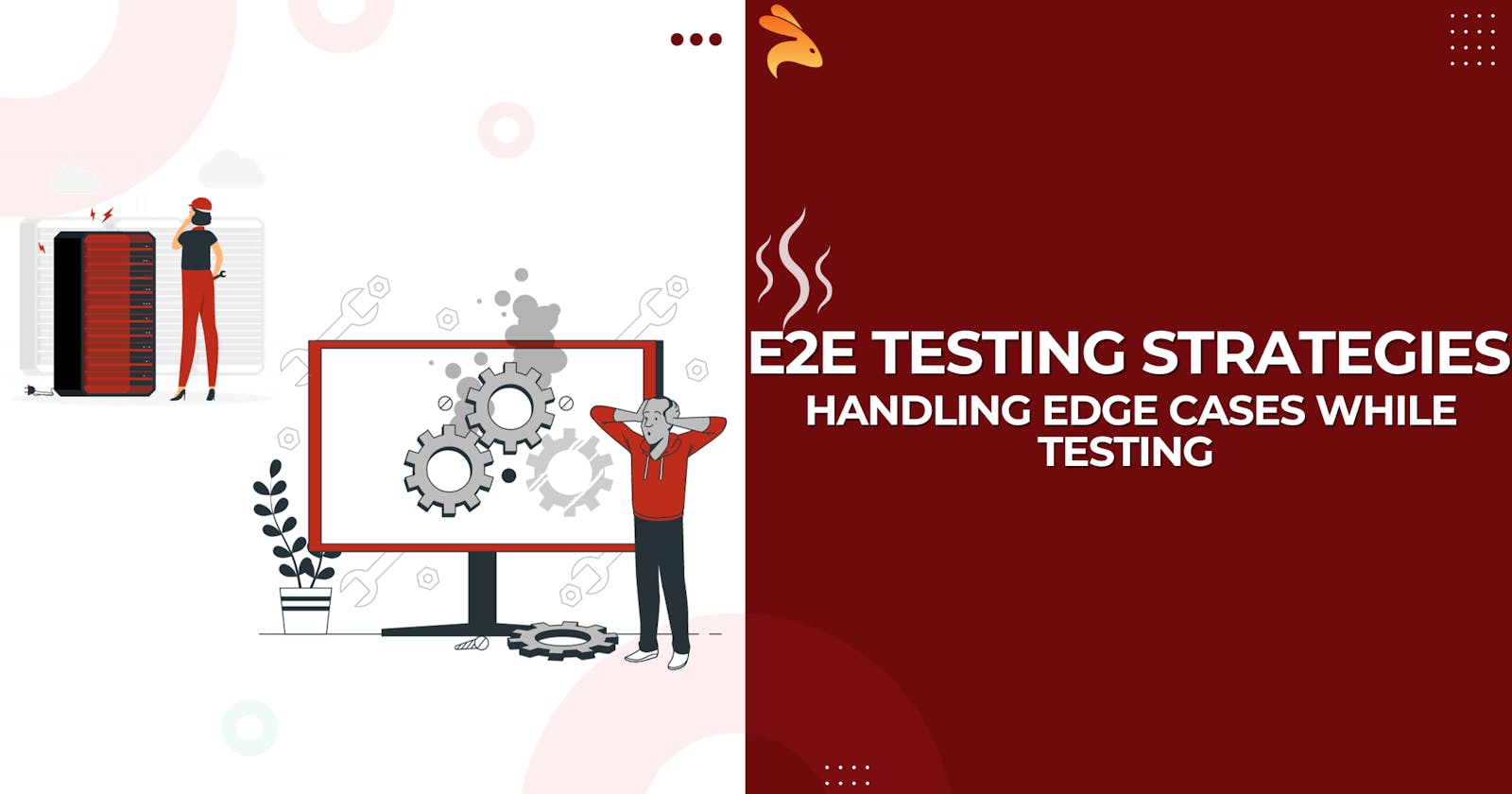End-to-end (E2E) testing, often considered the guardian at the gates of software quality, plays a pivotal role in the Software Development Life Cycle (SDLC). In a world where user expectations soar daily, ensuring an application's robustness is paramount. This is where E2E testing steps into the limelight.
Think of it as a vigilant guard. This guard constantly checks every part of your web application. Its purpose is to ensure that your application remains strong. It performs this action even in unusual situations, which people know as "edge cases."
In this blog, we explore E2E Testing Strategies, with a focus on dealing with tricky edge cases. But before we dive into the strategies, let's first understand what edge cases are.
Understanding Edge Cases 🧑🏻🏫

Edge cases, often referred to as boundary cases, are scenarios in software development that represent extreme or uncommon conditions and inputs. These are situations that fall at the very edges or boundaries of the expected or typical behavior of a system. They exhibit their uniqueness and typically involve uncommon or unforeseen user interactions, data inputs, or system conditions.
The critical role of involving edge cases while testing is because they help in:
Identifying vulnerabilities: Edge cases are often where vulnerabilities and unexpected behavior are most likely to occur. These scenarios may not be well-covered in standard testing procedures. Entering a long password, submitting an empty form, or using special characters in data inputs can all expose vulnerabilities.
Enhancing Software Reliability: By testing edge cases, you ensure that your software can gracefully handle unusual circumstances. This enhances the overall reliability of the system.
Meeting User Expectations: Users can be unpredictable, and they might use your software in ways you didn't anticipate. By testing edge cases, you align your software with user expectations. If someone enters a birthdate from more than 100 years ago, your app should handle it well, even if it's uncommon.
Avoiding Costly Failures: Neglecting edge case testing can lead to costly failures and security breaches in a production environment. It's much more cost-effective to identify and address these issues during the development and testing phases.
Some Common Edge Cases 😶🌫️
It's important to know typical edge cases because they can cause errors or unexpected behavior in the application. Here are some common examples:
Extreme Data Sizes:
Large File Uploads: Evaluate the application's ability to handle large file uploads, which can strain server resources and impact performance.
Overflow and Underflow: Check if the app can handle extremely big or small numbers without any errors or crashes.
Rare User Interactions:
Network Failures: Introduce network disruptions or slow connections during user interactions to assess how the application gracefully handles such situations.
Concurrency Issues: Test for race conditions and concurrency problems, where multiple users or processes interact with the application simultaneously.
Boundary Conditions:
Boundary Values: Check how the application works when using the lowest and highest values for age, quantity, or price.
Pagination: Test how the application handles edge cases in pagination, like the first and last page or cases where the number of items per page doesn't evenly divide the total.
Data Integrity and Database Edge Cases:
- Assess how the application handles situations like database connection failures, duplicate records, or constraint violations.
Unusual User Inputs:
Special Characters: Test how the application handles user inputs with special characters, such as symbols, emojis, or non-alphanumeric characters.
Long Inputs: Test the application's response to unusually long input strings, which may exceed character limits or cause layout issues.
Addressing edge cases like these proactively during testing can significantly improve the overall quality and user experience of your web application.
Challenges in Testing Edge Cases with E2E Testing
Limited Visibility: E2E testing faces challenges in identifying and addressing edge cases because of their unexpected nature. Since E2E testing typically follows predefined user flows, testers may overlook edge cases that fall outside these flows.
Data Variability: E2E testing must account for data variability, especially in edge cases where input data may be extreme or unusual. Ensuring that the application handles such data gracefully in an E2E testing environment is essential for comprehensive coverage.
Complex Interactions: Edge cases often involve complex user interactions or sequences of actions. E2E testing tools and scripts need to accurately simulate these interactions to ensure the application behaves as expected.
Resource Constraints: E2E testing doesn't always mimic real-world limits, such as high CPU or memory usage, leading to unusual situations. This lack of resource emulation can hinder thorough testing.
Cross-Browser and Cross-Device Compatibility: E2E testing needs different browsers and devices, but situations may differ on each platform. Ensuring consistent behavior across the entire spectrum of supported environments can be challenging.
Strategies for effective E2E Testing by handling Edge Cases ⚡

By implementing specific strategies and planning your tests, you can easily conduct effective testing to ensure a robust application. Here are some of the best strategies to implement in your testing lifecycle:
Identifying and Prioritizing Relevant Edge Cases: Begin by identifying the significant uncommon scenarios for your application. Then, prioritize them based on their potential impact on the functionality and user experience of the app. Focus on testing the most critical edge cases first.
Test Data Generation: Develop a systematic approach to generate test data that covers various edge cases. This may involve creating scripts or using data generation tools to simulate unusual inputs and scenarios.
Leverage Test Automation Frameworks: Use test automation frameworks to automate end-to-end tests, including scenarios that cover edge cases. These frameworks allow you to define test cases and automate repetitive testing tasks.
Error Handling and Validation: Pay special attention to error handling and validation mechanisms in your application. Check how the system acts in unexpected situations and make sure it shows the right error messages or responses.
Parameterized Testing: Use parameterized testing to run the same test case with different input values, including edge cases. This helps ensure comprehensive coverage.
Conclusion 👋🏻
In summary, E2E testing is like a watchful protector in the world of software quality assurance. As user demands rise, ensuring your applications are strong is crucial, and that's where E2E testing shines. It's like a vigilant guard, thoroughly checking every part of your software, especially in those tricky situations called "edge cases."
Understanding these edge cases is essential, as they represent the extremities of expected software behavior. They are unique, often unexpected scenarios that can challenge the resilience of your application.

